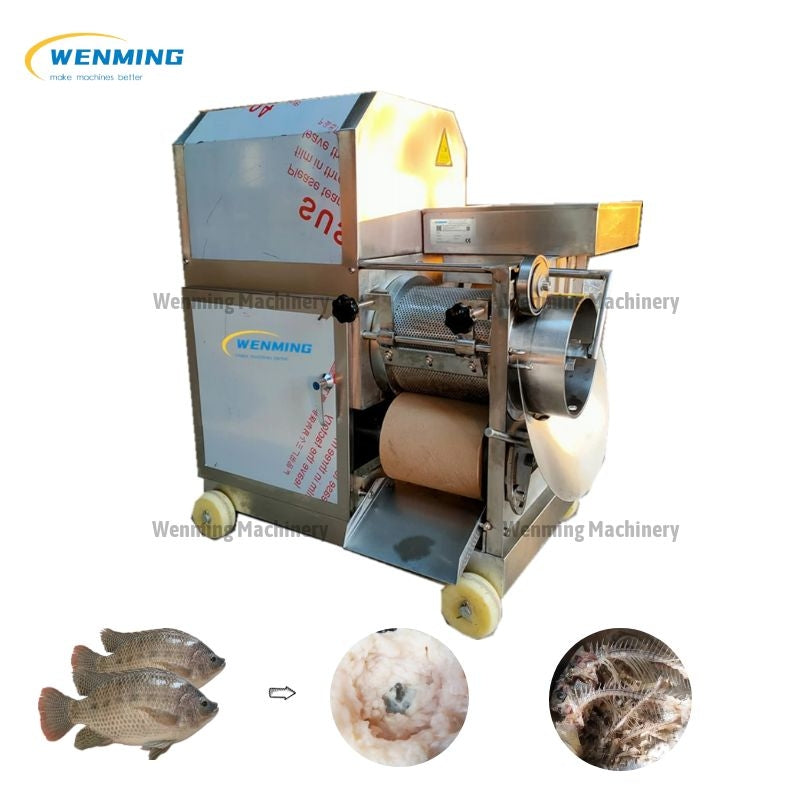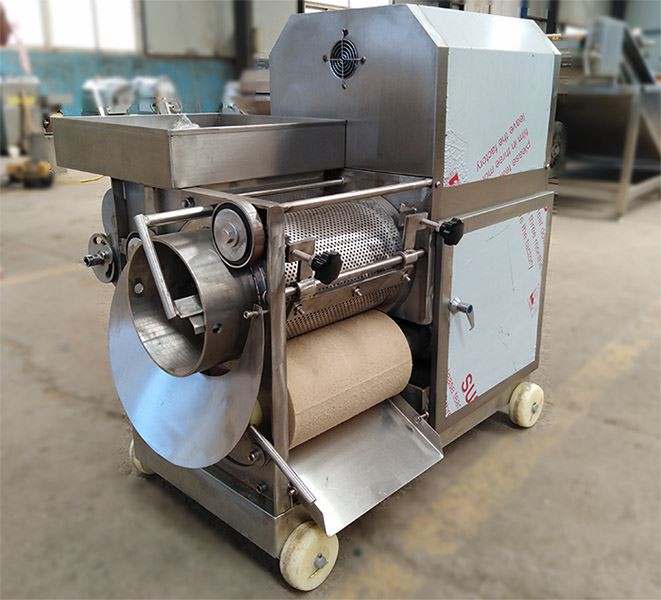10 years of experience as a food machinery equipment manufacturer
10 years of experience as a food machinery equipment manufacturer
Timor-Leste, with its extensive coastline and rich marine biodiversity, possesses a fishing sector that is crucial for national food security and livelihoods. As the nation seeks to develop its economic base, optimizing the value derived from its natural resources, including fisheries, is paramount. One technology that holds potential for enhancing the post-harvest value of fish is the fish meat separator, also known as a deboning machine. This equipment offers a mechanised solution for extracting fish flesh from bones, skin, and fins, thereby increasing yield and creating opportunities for product diversification.

A fish meat separator operates on a relatively straightforward mechanical principle. Typically, fish (either whole, headed and gutted, or fish frames after filleting) are fed into the machine. Inside, a perforated drum or belt system, in conjunction with a pressing mechanism (often a flexible belt), squeezes the fish. The softer fish flesh is extruded through the small holes of the drum, while bones, skin, and fins, being harder and larger, are retained and discharged separately. The result is a finely minced fish product, often referred to as fish mince or surimi (if further processed), which is largely free of bones and skin.
The introduction and appropriate application of fish meat separation technology could offer several distinct advantages to the fishery sector in Timor-Leste.
Despite the potential benefits, the successful adoption and integration of fish meat separators in Timor-Leste would require careful consideration of several factors.
Key Considerations for Implementation:
Species Suitability and Raw Material Quality: The efficiency of meat separation and the quality of the resulting mince can vary significantly depending on the fish species, its freshness, and pre-processing handling. Research into which local Timorese fish species are most suitable for this technology would be essential. Maintaining a consistent supply of good quality raw material is crucial.
Scale of Operation and Investment: Fish meat separators are available in various sizes and capacities, from small-scale units suitable for community-level enterprises to larger industrial machines. The initial investment cost, operational expenses (power, water, maintenance), and the scale of local fish landings must be carefully assessed to ensure economic viability. A phased approach, perhaps starting with pilot projects, might be prudent.
Infrastructure and Technical Support: Reliable access to electricity and clean water is fundamental for operating and maintaining hygiene standards in any food processing operation. Furthermore, the availability of technical expertise for machine operation, routine maintenance, and repairs is critical to prevent prolonged downtimes and ensure longevity of the equipment.
Skills Development and Training: Proper training for personnel is necessary not only for operating the machinery correctly and safely but also for understanding quality control parameters, hygiene practices (HACCP principles), and basic maintenance. This includes training in handling both the raw fish and the processed mince to prevent contamination and ensure food safety.
Market Development and Consumer Acceptance: While separated fish meat can be used for various products, understanding or developing local market demand for these new products is vital. Consumer education and promotion may be needed to build acceptance for items like fish balls or fish cakes if they are not traditionally common.
Cold Chain Management: Fish mince is highly perishable. An effective cold chain – from the point of catching the fish, through processing, and to the final consumer – is essential to maintain product quality and safety. This includes refrigerated storage for raw materials and finished products, and potentially refrigerated transport.

Sustainability Concerns: It is imperative that any increase in processing capacity enabled by such technology is aligned with sustainable fishing practices. The goal should be to better utilize existing catches, not to incentivize overfishing. Fisheries management policies must be robust to ensure resource sustainability.
The applications for separated fish meat are diverse. Domestically, it can be incorporated into local cuisine, providing an affordable and convenient source of protein. For institutional catering, such as schools or community feeding programs, products made from fish mince can offer nutritious meal options. For commercial ventures, it forms the base for a business centred on processed fish products targeting local markets and, potentially in the future, niche export markets.
In conclusion, fish meat separator technology presents a tangible opportunity for Timor-Leste to enhance the value of its fishery resources. By improving yield, enabling product diversification, and potentially creating new economic avenues, these machines can contribute to the modernization of the post-harvest sector. However, its successful implementation hinges on a holistic approach that addresses infrastructural needs, skill development, market dynamics, and, crucially, the overarching principle of sustainable resource management. If thoughtfully integrated, fish meat separators can be a valuable tool in Timor-Leste’s journey towards a more productive and resilient fishery industry.
